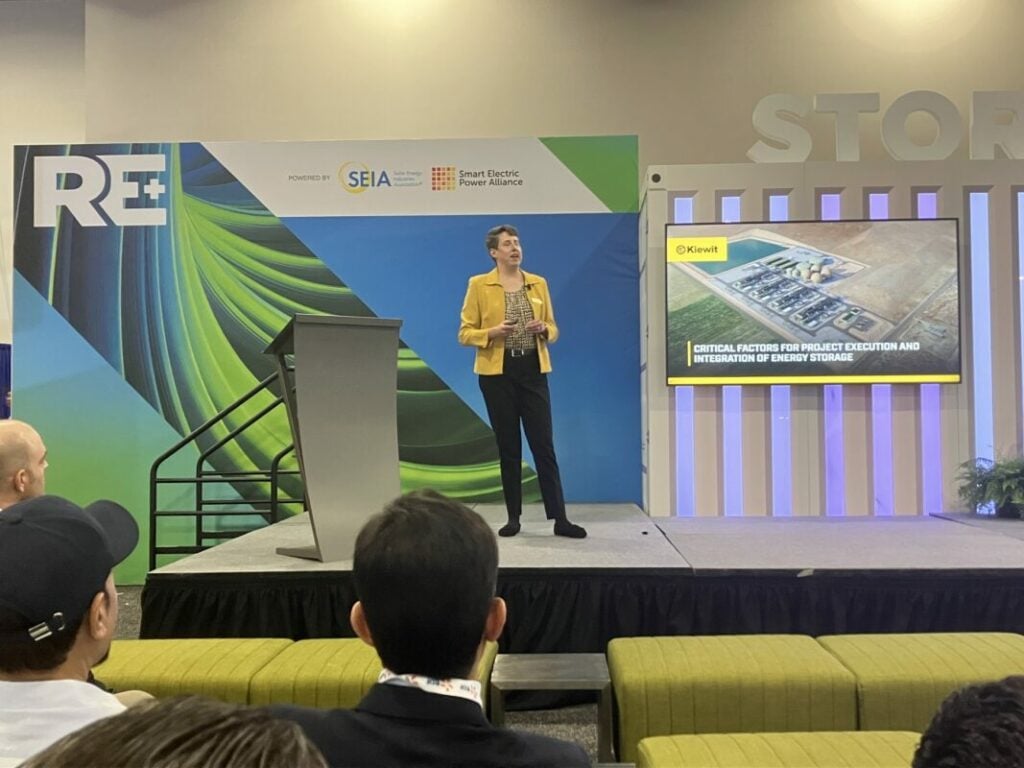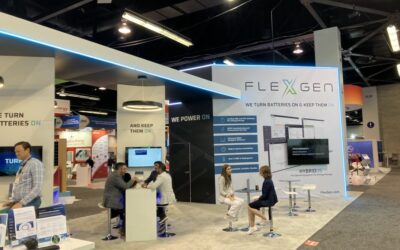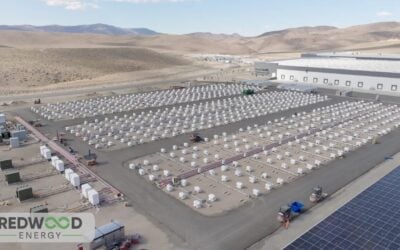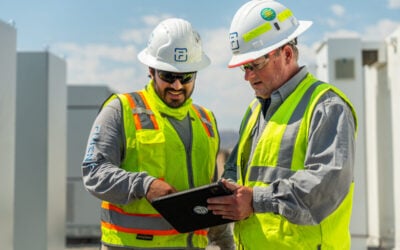
Prices of lithium and the battery supply chain for energy storage systems are becoming manageable once again, but lead times for transformers and other equipment have greatly extended.
Those were the shared views of several industry sources at last week’s RE+ 2023 trade show in Las Vegas, including system integrators and engineering, procurement and construction (EPC) contractors.
Enjoy 12 months of exclusive analysis
- Regular insight and analysis of the industry’s biggest developments
- In-depth interviews with the industry’s leading figures
- Annual digital subscription to the PV Tech Power journal
- Discounts on Solar Media’s portfolio of events, in-person and virtual
Raw material costs, particularly lithium carbonate, had been going through extreme volatility over the past couple of years, spiking fivefold in 2021 and then reaching all-time highs in 2022.
The impact on the stationary battery energy storage system (BESS) industry, which was already squeezed by the dominance of electric vehicles (EVs) as offtakers of lithium-ion cells, was felt in terms of much longer lead times, as well as the rising costs. This was perhaps felt even more acutely given the costs of batteries had enjoyed successive drops over a period of about a decade prior to 2020-2021.
One of the main knock-on effects was that with constantly changing prices, it became more and more standard across the industry to incorporate raw material index (RMI) linked pricing into contracts, while supply deals were made more difficult to secure given the shifting costs involved for developers and investors.
As reported by sources including Energy-Storage.news however, the situation looks to be easing. Despite some rises at the beginning of this year, research firm Fastmarkets said in May that the long-term outlook for raw material inputs and therefore battery packs is that costs will trend downward once more.
“A year ago, we were seeing very, very high raw material price inputs. And that was driving up the cost of batteries very high, and everyone was scrambling to figure out what that meant,” John Zahurancik, president for Americas at Fluence told Energy-Storage.news in an interview.
“We’ve come through a lot of that and sort of largely come back into line with where we were prior to that spike.”
A slowdown in demand in China, where a large percentage of battery manufacturing and materials processing is done, meant a near-term surplus of available materials and components is being created. That’s having the positive effect of pushing prices down, Zahurancik said.
The impacts were in evidence as late as the first quarter of this year, with analysis firm Wood Mackenzie noting that supply chain delays, as well as lengthy interconnection times, led to the US energy storage sector suffering a slowdown in deployments.
Transformer lead times have trebled
However, there’s a squeeze in the supply chain for high voltage (HV) equipment, particularly – but not exclusively limited to – transformers.
In a presentation given at the RE+ exhibition and conference, Diane Fischer, director of generation and energy storage services at EPC firm Kiewit, pointed out that lead times for some have tripled and others doubled.
About 12 months wait would have been typical for large transformers in the past, but as of the end of June, EPCs would be looking instead at a 32-36 month lead time, plus time for the procurement cycle. HV circuit breakers are on lead times of about 60-80 weeks, versus 10-40 weeks previously.
It isn’t limited to HV equipment either: medium voltage (MV) switchgears are on 50-80 week lead times as opposed to 20-40 weeks and even enclosures can have lead times in excess of 100 weeks, when previously the wait would be half of that, or less, Fischer said.
Representatives of another EPC company, Burns & McDonnell, corroborated Fischer’s assessment in speaking with Energy-Storage.news. Renewables and energy storage project manager Julian Hoover said that circuit breakers for substations are indeed among the components for which the lead times have been dramatically extended, as demand goes up.
The solution for Burns & McDonnell, Hoover said, has been to be “very strategic” in its sourcing and to speak and partner with multiple vendors. Meanwhile warehousing or stockpiling key equipment is not really a viable option.
“Especially with utility partners that we have, they all like certain types of equipment. And the specifications are just slightly different enough, that we can’t just buy a bunch of, you know, 138 breakers and keep them in a warehouse,” Hoover said.
“The high voltage equipment has gotten very scarce. And so people are talking about long delays on large scale transformers, switchgear, all of that, for sure,” Fluence’s John Zahurancik said.
“Almost every customer we’re dealing with, and it’s not related to storage, it’s for all their projects, whether it’s wind or solar, or whatnot.”
As Hoover said, companies in the industry are negotiating the new landscape of procurement, while to paraphrase his colleague Ben Kuisle, director of energy storage for EPC projects at Burns & McDonnell, it’s been a question of adjustment to which the COVID-19 pandemic served as a rude awakening.
The market was caught by surprise when supply chain dynamics began to change during the time of COVID, but as a result, everyone now has a new and shared appreciation of the challenges involved. Changes in contract structures and other measures have enabled the industry, to some extent, to “absorb” those new dynamics, Kuisle said.
Our publisher Solar Media is hosting the 10th Solar and Storage Finance USA conference, 7-8 November 2023 at the New Yorker Hotel, New York. Topics ranging from the Inflation Reduction Act to optimising asset revenues, the financing landscape in 2023 and much more will be discussed. See the official site for more details.






